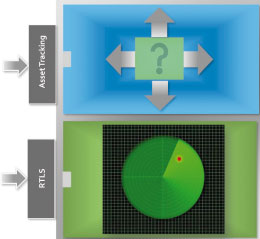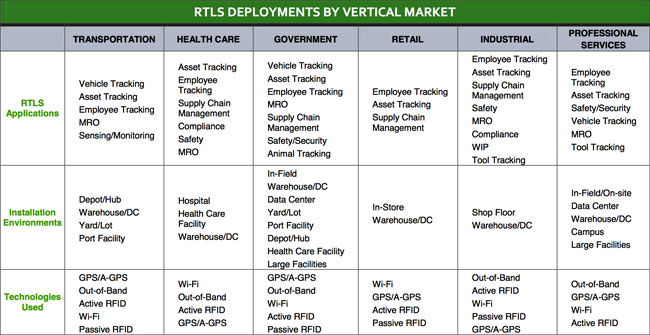An exploration into real-rime locating systems (RTLS) explaining what it is, how it is used and some of the aspects that should be investigated before deploying a system of this kind for the tracking of assets
by Michael Liard, VDC Research
 Real-Time Locating Systems (RTLS) are precise positioning systems that not only enable a user to identify and track many different types of key objects; such as assets, tools, equipment, containers, WIP (Work in Process) items, people and/or animals, but also provide this information in real time through automatic and continuous feedback. In other words, an RTLS solution provides the enterprise with immediate information on precisely where something is and/or has been – and in some instances what it has done – via constant communication between the system and the object being tracked.
Real-Time Locating Systems (RTLS) are precise positioning systems that not only enable a user to identify and track many different types of key objects; such as assets, tools, equipment, containers, WIP (Work in Process) items, people and/or animals, but also provide this information in real time through automatic and continuous feedback. In other words, an RTLS solution provides the enterprise with immediate information on precisely where something is and/or has been – and in some instances what it has done – via constant communication between the system and the object being tracked.
Anything being tracked by RTLS has a tag affixed to it which can be located by the infrastructure of the system. An alternate implementation can leverage devices that are location aware (i.e., can determine their own location) and can report their location to the infrastructure (e.g., cell phone for GPS tracking). The tag or location aware device stores the unique identity and sometimes additional information (e.g., current and last location, users of the object, product origin, physical conditions, maintenance records, compliance, etc.) about the object on which it is attached or representing. The information stored on these devices, along with real time positioning of the object, is then communicated back to an associated business system.
A typical topology provides real time visibility, normally via a map or GUI (Graphical User Interface), as well as associated real time planning, execution and reporting functions. The data may also be integrated into a wider ERP (Enterprise Resource Planning) solution by providing updates to key business processes such as warehouse management, production planning and scheduling, transportation planning and other related applications.
Asset tracking
Because RTLS solutions track objects, they are commonly confused with asset tracking systems. RTLS can be used to provide asset tracking; however, not all asset tracking systems are RTLS. The difference between these two systems lies in the continuous communication between the objects being tracked and the system. Asset tracking solutions are not considered to be RTLS unless they are configured for automatic and continuous reporting. In most traditional asset tracking systems, the tag interacts with the system only when it is read at predetermined points (e.g., doorway or portal). This means that the system bases the location of the asset on where it was last read and not where it actually is. In other words, the system will know that an asset is in a certain area, but it will not be able to precisely locate where in that area the asset is.
For example, an asset tracking system can tell that an object has entered a warehouse if the tag is read as it moves through the dock door; however, it typically is not able to specify where the asset is in the warehouse. This is not the case with RTLS systems. As a result of their continuous and automatic communication between the tag and the system, RTLS solutions provide the precise location of the asset.
Capabilities
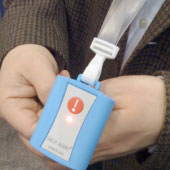 As mentioned before, RTLS can provide Asset Tracking capabilities, but this is only one of a growing list of applications the solution is used to support within the enterprise. The inherent properties of an RTLS solution lend itself to be able to be leveraged for applications such as:
As mentioned before, RTLS can provide Asset Tracking capabilities, but this is only one of a growing list of applications the solution is used to support within the enterprise. The inherent properties of an RTLS solution lend itself to be able to be leveraged for applications such as:
- Asset Management – the tracking, management and utilization of an asset(s). An asset is defined as anything tangible owned by a company or individual that is held for business use with the intention of providing future benefit and not expected to be converted to cash in the current or upcoming fiscal year. Assets are valuable to their owners – financially, operationally, or sentimentally.
- Human Resource Management – the management of a company’s workforce as it relates to operational and compliance activities. These systems are leveraged to ensure employees are able to achieve corporate goals and objectives. Common applications include time/attendance, process compliance, time-on-task tracking and employee or object association.
- Supply Chain Management – the management of interconnected businesses and business processes related to the manufacture, distribution and sale of products and services. Supply chain management refers to the movement and storage of raw materials, inventory, work-in- process and finished goods from the point of origin through to the point of consumption. Supply chain management pertains to both inbound and outbound logistics and the tracking of the assets (e.g., containers, vehicles) used by these processes.
- Sensing & Monitoring – the integration of sensors (i.e., data loggers) that are used to monitor the physical environment of an object. Common sensors include temperature and humidity.
- Maintenance Repair & Overhaul (MRO) – MRO is defined as all activities – technical and administrative – that are conducted as a means to ensure and/or restore an object (e.g., tools, equipment, vehicles) is able to perform its required function. Compliance Compliance is the act or process of adhering to a demand or regimen specified by a government, industry or customer. Compliance ensures conformance to specified use requirements or standards.
- Safety/Security – the management, assurance and compliance of safety and security for the enterprise, its employees, assets, products and processes. Common applications include worker safety, evacuation and emergency mustering.
Technology basics
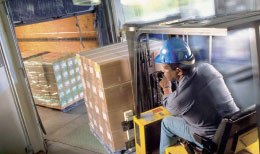 The location and communication technologies being used to support RTLS systems are diversifying. The use of the technologies is largely dependent upon the installation and use environments, application, and compliance/regulatory requirements, as well as the existing legacy infrastructure. In many instances, companies are opting to leverage technologies already being used in their enterprise such as Wi-Fi or Active RFID, as a means to reduce complexity and costs. For example, some systems that are using both indoor and outdoor requirements can use the same infrastructure, whereas others may need to leverage different technologies for solely indoor use. Additionally an application that requires accuracy to 1ft would require different technologies than one that requires accuracy of 10ft.
The location and communication technologies being used to support RTLS systems are diversifying. The use of the technologies is largely dependent upon the installation and use environments, application, and compliance/regulatory requirements, as well as the existing legacy infrastructure. In many instances, companies are opting to leverage technologies already being used in their enterprise such as Wi-Fi or Active RFID, as a means to reduce complexity and costs. For example, some systems that are using both indoor and outdoor requirements can use the same infrastructure, whereas others may need to leverage different technologies for solely indoor use. Additionally an application that requires accuracy to 1ft would require different technologies than one that requires accuracy of 10ft.
Primary technologies used in RTLS solutions include, but are not limited to:
- active RFID location tracking solution: determines location via communication with a battery supported radio frequency-based transponder capable of transmitting and/or receiving information independent of the reader (e.g., ISO 24730, UWB)
- passive RFID-based location tracking solution (i.e., EPC UHF): determines location by receiving power from an array of RF power transmitters that energize passive RFID tags, (e.g., EPC Gen2, ISO 18000-6) within an area of coverage and allow locating by using sectored antennas to determine Angle of Arrival (AoA)
- GPS (Global Position System) location tracking solution: determines location via communication of a GPS device and GPS satellites
- assisted – GPS (A- GPS) location tracking solution: determines location via readings from both GPS satellites and cellular base stations/towers and is supported by a location server. Typically more accurate than GPS-only systems
- Wi-Fi-based location tracking solution: determines location via correlation from interactions with mapped Wi-Fi access points and GPS
- out-of-Band (OoB) proprietary RF/sensor-based location tracking solution: determines location leveraging proprietary solutions and technologies such as ultra-wide band (UWB/IEEE 802.15.4f), infrared and ultrasound.
Value
The information and functionality RTLS systems offer are providing tremendous value to the enterprise. The increased visibility and information is proving to be invaluable and highly actionable for enhancing and streamlining the operations and processes of the using enterprise. Typical benefits include:
operational improvement: more streamlined and efficient processes resulting in improved throughput, resource utilization and error-proofing, as well as significant reductions in operational costs such as search time on task, rental item reduction and process error
improved and more informed decision-making: faster, more efficient information distribution enables the most actionable employees to react quicker
more effective maintenance and compliance: the ability to store information on the object is being leveraged to support MRO activities as well as ensure government, industry or customer compliance (e.g., cleaning, calibration). Complete records can be rapidly accessed to ensure proper handling
new service opportunities: in many instances, the information and visibility provided by RTLS solutions are being used by enterprises to develop new offerings (and revenue generating opportunities) and benefits that can be passed on to their customers. For example, shipping companies can offer real-time visibility into the transportation of goods (via the web) to their customers as well as offer physical condition monitoring services … for an additional fee or as part of a package of services
competitive advantage: more efficient operations, cost reductions, better decision making and new dynamic offerings to customers ensure a competitive advantage to most early adopters of RTLS systems. This advantage is enhanced as the solution continues to penetrate the rest of the enterprise and value chain.
Deployment
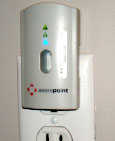 RTLS solutions are increasingly being used in virtually all primary regions and vertical markets and across Tier I, II and III communities (i.e., companies with annual revenue >$200 Million). The table provides an overview of the typical RTLS deployments as cited by the respondents to VDC’s enterprise end user survey.
RTLS solutions are increasingly being used in virtually all primary regions and vertical markets and across Tier I, II and III communities (i.e., companies with annual revenue >$200 Million). The table provides an overview of the typical RTLS deployments as cited by the respondents to VDC’s enterprise end user survey.
Despite the benefits the system can provide, RTLS is not a solution for every company. Companies should consider evaluating or adopting RTLS solutions if they have any of the following business challenges or characteristics: There is a large installed base of mission critical and/or mobile assets used in the operation of the business.
The supply or value chain is complex and is comprised of multiple product sets/types. There is a desire to provide more value to the customer and improve their satisfaction. A need exists to reduce order to cash cycle time, improve throughput and streamline processes. There are significant MRO and/or compliance requirements. Current Asset Tracking solutions do not provide the level of visibility required. Employee management and safety is critical to the success of the business. RTLS is being used in other points of the supply or value chain. Deploying RTLS does not have to be a complex, timely and expensive process. In fact, most companies VDC spoke with about their RTLS deployments indicated they experienced very little pain associated with adoption, scale and solution expansion. The most pain encountered by these enterprises was associated with identifying and selecting the right vendor.
Adoption strategy
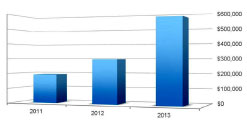 Start small, but do not lose your vision. Focus your initial efforts on addressing one or two, less complex business issues, all the while keeping your overall vision of how the solution can be used throughout your enterprise and value chain in mind. Starting small offers several advantages for the adopting enterprise, including: Less risk and investment associated with proving the concept. ROI is more measurable and time to attain ROI will be faster. Improves enterprise’s level of knowledge based on real world experience. Simplifies justification for further investment in the solution (already proven to provide value to your firm). Ensures the right choice in RTLS solution provider was made (ability to test the vendor with lower risk). Facilitates scale, expansion and further integration (of the established infrastructure).
Start small, but do not lose your vision. Focus your initial efforts on addressing one or two, less complex business issues, all the while keeping your overall vision of how the solution can be used throughout your enterprise and value chain in mind. Starting small offers several advantages for the adopting enterprise, including: Less risk and investment associated with proving the concept. ROI is more measurable and time to attain ROI will be faster. Improves enterprise’s level of knowledge based on real world experience. Simplifies justification for further investment in the solution (already proven to provide value to your firm). Ensures the right choice in RTLS solution provider was made (ability to test the vendor with lower risk). Facilitates scale, expansion and further integration (of the established infrastructure).
Cost
The cost of an RTLS solution can vary significantly. On average, the respondents to VDC’s survey of RTLS enterprises indicated they were spending, on average, approximately $190,000 on their RTLS systems in 2011, a value that is expected to increase more than 90% within 24 months as these companies rapidly scale, expand and integrate their solutions. It should be stated that these budget values represent the entire population of survey respondents and that in instances where the respondent companies are more experienced with RTLS and/or have already began deploying the solution, the annual budgets reported are typically closer to the 2013 values listed (i.e., >$500,000).
The primary factors impacting the price of an RTLS solution include:
- type of technology(ies) required – although the primary consideration for pricing should be on the cost of the system, hardware price can vary considerably by technology and performance requirements. For example: more than one technology may be required to provide the accuracy and precision needed; the price of an active tag can be 100x more than that of a passive one; however, the number of readers required to support a passive solution may be significantly greater; a reader may not be required if the tag is location aware and can communicate directly with the system:
- size of the deployment – not only in the number of tags and readers required, but also in the number of locations where the solutions will be used. Hardware economies of scale can have a significant impact on the solution price as well as afford the adopting enterprise greater bargaining power during negotiations
- solution complexity and level of integration – the more complex the solution and the deeper the system needs to be integrated into the enterprise, the greater the systems integration costs. Highly complex, deeply integrated RTLS solutions (e.g., temperature monitoring of produce while being shipped directly linked to a distribution center’s inventory and sales management system to maximize shelf-life and quality) can add more value than more basic systems, but they will require more upfront time and resources
- level of customization – no two deployments are identical and the more customization typically means more expensive. There will be some level of customization required in order to implement RTLS.

